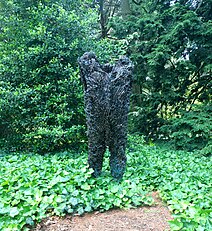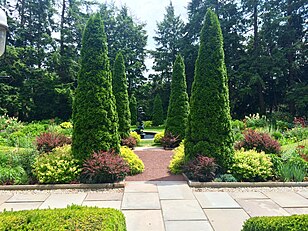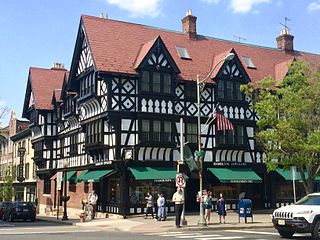
Princeton is a municipality with a borough form of government in Mercer County, in the U.S. state of New Jersey. It was established on January 1, 2013, through the consolidation of the Borough of Princeton and Princeton Township, both of which are now defunct. As of the 2020 United States census, the borough's population was 30,681, an increase of 2,109 (+7.4%) from the 2010 census combined count of 28,572. In the 2000 census, the two communities had a total population of 30,230, with 14,203 residents in the borough and 16,027 in the township.
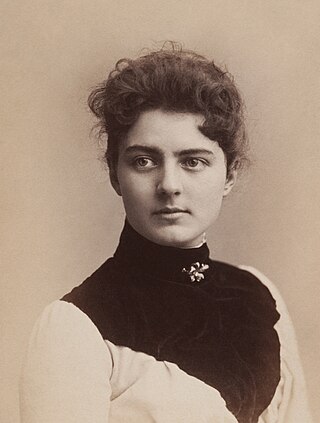
Frances Clara Cleveland Preston was the First Lady of the United States from 1886 to 1889 and again from 1893 until 1897, as the wife of President Grover Cleveland. She is the only first lady in U.S. history to have served in the role during two non-consecutive terms.

Drumthwacket is the official residence of the governor of the U.S. state of New Jersey at 354 Stockton Street in Princeton, New Jersey, near the state capital of Trenton.

Nassau Hall, colloquially known as Old Nassau, is the oldest building at Princeton University in Princeton, Mercer County, New Jersey, United States. In 1783 it served as the United States Capitol building for four months. At the time it was built in 1756, Nassau Hall was the largest building in colonial New Jersey and the largest academic building in the American colonies.

The Woodrow Wilson Presidential Library and Museum is a complex located in Staunton, Virginia. It contains the President's birthplace, known as the Manse, a Museum that explores the life and times of Woodrow Wilson (1856–1924), a 6,800 square feet (630 m2) Research Library, a gift shop, and several other buildings that are not open to the public. Like all United States presidential libraries for administrations prior to that of Herbert Hoover, Wilson's is not part of the Federal National Archives' presidential library system.

Princeton Cemetery is located in Princeton, New Jersey, United States. It is owned by the Nassau Presbyterian Church. In his 1878 history of Princeton, New Jersey, John F. Hageman refers to the cemetery as "The Westminster Abbey of the United States."
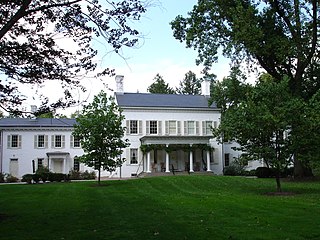
Morven, known officially as Morven Museum & Garden, is a historic 18th-century house at 55 Stockton Street in Princeton, New Jersey. It served as the governor's mansion for nearly four decades in the 20th century, and has been designated a National Historic Landmark for its association with Richard Stockton (1730-1781), a signer of the United States Declaration of Independence.

The University Cottage Club or simply Cottage Club is one of eleven current eating clubs at Princeton University, in Princeton, New Jersey, United States. It is one of the six bicker clubs, along with The Ivy Club, Tiger Inn, Cap and Gown Club, Cannon Club and Tower Club.

John Notman was a Scottish-born American architect and landscape architect based in Philadelphia. He designed buildings, cemeteries, churches and country estates in the Mid-Atlantic region of the United States and helped popularize Italianate architecture in the United States.

Westland Mansion was the home of Grover Cleveland, the 22nd and 24th president of the United States, from his retirement in 1897 until his death in 1908. The house is located in the historic district of Princeton, New Jersey, and is a National Historic Landmark also known as the Grover Cleveland Home.
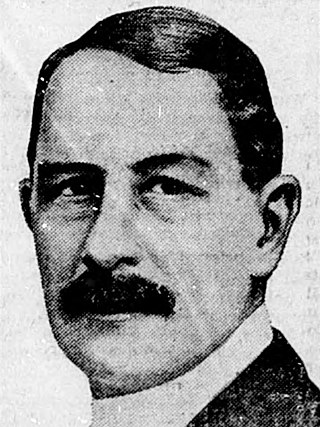
Thomas Jex Preston Jr. was an American archeology professor and academic administrator.

The Albert Einstein House at 112 Mercer Street in Princeton, Mercer County, New Jersey, United States was the home of Albert Einstein from 1935 until his death in 1955. His second wife Elsa Einstein died in 1936 while living in this house.

The Joseph Henry House is a historic building located on the campus of Princeton University in Princeton, Mercer County, New Jersey, United States. Joseph Henry, a prominent American physicist who worked in electromagnetics, designed the house in 1836 and lived there from its completion in 1838 until taking a position as the first secretary of the Smithsonian Institution in 1848. The construction of the house was offered to the young physicist as part of the University's attempt to hire him away from the Albany Academy in an attempt to raise Princeton's profile. After Henry's departure, the house served as the official housing of the Dean of the College, the University's senior undergraduate academic officer, from 1909 to 1961.

Maybury Hill is a historic house at 346 Snowden Lane, in Princeton, Mercer County, New Jersey, United States. Built about 1725, it was the birthplace and boyhood home of Joseph Hewes (1730-1799), a signer of the United States Declaration of Independence. The house, an architecturally excellent example of Georgian domestic architecture, was designated a National Historic Landmark in 1971 for its association with Hewes. It is a private residence not open to the public.

Shadow Lawn is a historic building on the campus of Monmouth University in West Long Branch, Monmouth County, New Jersey, United States. Built in 1927 for Hubert T. Parson, president of the F.W. Woolworth Company, it is one of the last large estate houses to be built before the Great Depression. It was designated a National Historic Landmark in 1985 for its architecture.

The President's House, also known as the John Maclean House, or simply the Maclean House, in Princeton, Mercer County, New Jersey, United States, was built to serve as the home of the President of the College of New Jersey, which later became Princeton University. It was completed in 1756, the same year as Nassau Hall. United States Founding Father John Witherspoon lived here from 1768 through 1779, during which time he served as a delegate to the Continental Congress and signed the Declaration of Independence. George Washington occupied Maclean House in January 1777, during the Battle of Princeton and in 1783 while Congress met in Nassau Hall.

The Southworth House is a Classical Revival and Italianate house in Cleveland, Ohio, United States that was built in 1879. Named for its first owner, W.P. Southworth, a leading resident of late nineteenth-century Cleveland, the house has been used for a variety of commercial purposes in recent decades. One of many historic sites in its eastside neighborhood, it has been listed on the National Register of Historic Places since 1984.
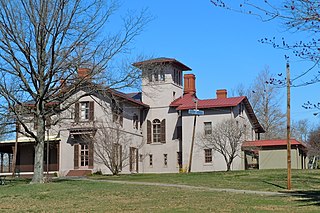
The Mansion House is a historic residence located in Cadwalader Park in the city of Trenton in Mercer County, New Jersey, United States. The house was built as a summer residence for Henry McCall Sr. of Philadelphia in 1848, and is one of the earliest examples of Italianate architecture in the United States. The building was added to the National Register of Historic Places on February 6, 1973, for its significance in architecture and landscape architecture.
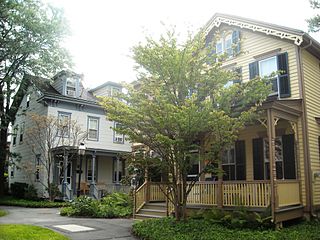
The Princeton Historic District is a 370-acre (150 ha) historic district located in Princeton, New Jersey that was listed on the U.S. National Register of Historic Places in 1975. It stretches from Marquand Park in the west to the Eating Clubs in the East, from the Princeton Cemetery in the north to the Graduate College in the south. The district encompasses the core parts of the campuses of the Princeton Theological Seminary and Princeton University. It also includes the business district centered on Nassau Street and many historic homes, both mansions in the western section and more humble dwellings in the Witherspoon/Jackson neighborhood. Notable churches within the district include Nassau Presbyterian Church, Trinity Episcopal, Nassau Christian Center, and the Princeton University Chapel. The district is home to seven of Princeton's nine, and New Jersey's fifty-eight, National Historic Landmarks, the largest concentration of such sites in the state.

The Walter Lowrie House is located at 83 Stockton Street in Princeton, New Jersey, United States, and is the official residence of the president of Princeton University. The mansion was built in 1845 by Commodore Robert F. Stockton for his son John P. Stockton, both senators from New Jersey. Prior to being a senator the younger Stockton had served as the Attorney General of New Jersey and later as ambassador to Italy. Commodore Stockton was the son of Richard Stockton, another New Jersey Senator, and grandson of Richard Stockton, a signer of the Declaration of Independence. The latter Richard Stockton built Morven in the 18th century, which sits a short distance up Stockton Street. His grandfather's home, known as the "Barracks" is found at 32 Edgehill Street, the street which fronts the gate to the Walter Lowrie House property. It was built in the 17th century and gained its name from having served as a barracks in either the French and Indian War or the American Revolution.





